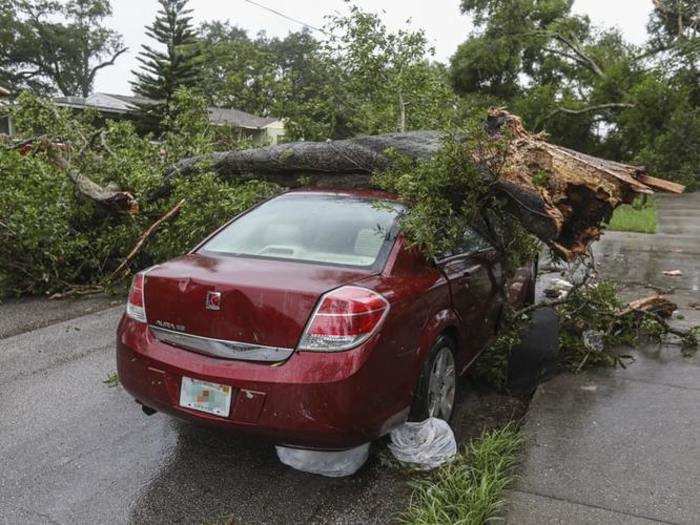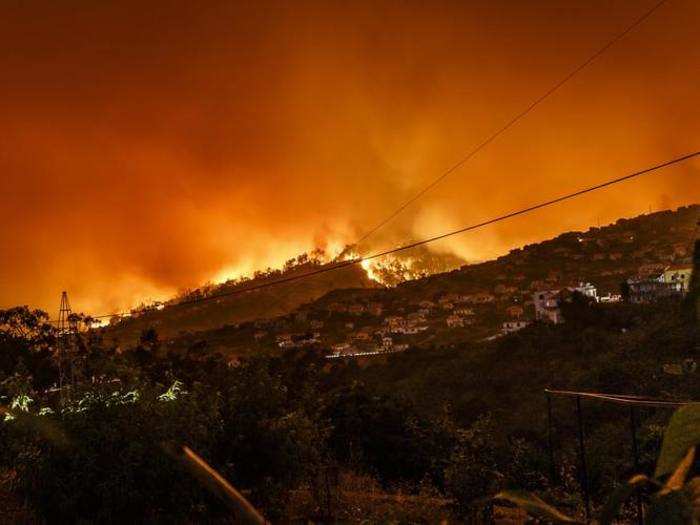Unsplash
- The World Economic Forum Global Risk Report cautions the world against the next imminent dangers.
- In 2020, the risk of a global pandemic became reality, and the World Economic Forum (WEF) report has been warning the world about it since 2006.
- The report called the human and economic cost of COVID-19 ‘severe’.
- While governments around the world have promised $12 trillion in stimulus, experts said that it shouldn’t be seen as a cost but as an investment for the future.
The World Economic Forum Global Risk Report, which has been calling out a global pandemic, a risk to humanity since 2006, has been warning us that ‘extreme weather’ is the next most likely threat since five years.
Released today, the Global Risk Report and produced in collaboration with Zurich Insurance, Marsh McLennan and SK Holdings, the report cautions the world against the next imminent dangers.
The report called the human and economic cost of COVID-19 ‘severe’ and something that we weren’t prepared for even though the report had first warned about a lethal flu due to travel in 2006. The report said that the economic shockwave from COVID-19 has increased inequality, and only 28 economies are expected to have grown in 2020.
“In 2020, the risk of a global pandemic became reality, something this report has been highlighting since 2006. We know how difficult it is for governments, business and other stakeholders to address such long-term risks, but the lesson here is for all of us to recognize that ignoring them doesn’t make them less likely to happen. As governments, businesses and societies begin to emerge from the pandemic, they must now urgently shape new economic and social systems that improve our collective resilience and capacity to respond to shocks while reducing inequality, improving health and protecting the planet,” said Saadia Zahidi, Managing Director at the World Economic Forum in a statement.
On the basis of the report, the WEF then liaisons with global leaders to help form principles, policies and partnerships to tackle the risks.
Borge Brende, President, World Economic Forum said that governments across the world have made way for a cumulative stimulus worth 12 trillion dollars and the world hasn’t seen anything like this since the second world war. Governments are now pivoting from short term consumptions to investments – in digital and green transformation.
“Not such a fiscal muscle left, we hope to see more public, private partnerships around the world. The cost of inaction far exceeds the cost of action, the longer term price of not doing anything far exceeds the cost we have to bear now,” he said.
The experts agreed that technology, 5G and artificial intelligence will help the world build resilience against the dangers.
Here are the top ten likely global risks in 2021, according to the World Economic Forum
Extreme weather
Unsplash
For the past five years, extreme weather conditions have been listed as the top global risk. Severe weather conditions like cold fronts, fires, floods, heatwaves, windstorms etc., have been the reason for mass destruction across the world, impacting lives and economies.
“There is no vaccine for this, the only action we can do is take sustainable action today,” said Saadia.
Climate Action Failure
Unsplash
Climate action failure ranks high in the global risks list, not just by likelihood but also by the impact. Climate action failure is defined by the failure by governments, corporations and businesses to take up active climate change mitigation measures and help protect ecosystems and livelihoods around the world.
Human environmental damage
Unsplash
The third-largest threat, according to the Global Risk Report, is environmental damage caused by human activities. As the world progresses and commercialization spreads across the globe, man-made disasters have been beginning to be a massive threat to humanity.
Infectious diseases
Unsplash
As the world continues to battle the deadly coronavirus pandemic, which has already claimed over 2 million lives, ‘infectious diseases’ continues to be a global risk. In fact, it ranks as the biggest risk by impact according to the WEF.
Biodiversity loss
Unsplash
The loss of biodiversity is another big threat to humanity. The report defined biodiversity loss as “irreversible consequences for the environment, humankind, and economic activity, and a permanent destruction of natural capital, as a result of species extinction and/or reduction.”
Digital power concentration
Unsplash
Another risk listed in the Global Risk Report is the concentration of power with a restricted few in the world, especially when it comes to digital assets, which could lead to “unequal private or public access”.
Peter Giger, Group Chief Risk Officer, Zurich Insurance Group, also called out the “monopolistic nature of large tech companies” and government’s role in regulations to reduce digital dependency.
Digital inequality
Unsplash
As the world continues to rely heavily on digital and technological growth, unequal or fractured access to digital networks because of “unequal investment capabilities, lack of necessary skills in the workforce, insufficient purchase power, government restrictions and/or cultural differences” is another risk to the world.
“We have to invest in the future. We have to ensure inequalities are not growing but inequalities are declining,” said Adrian Monck, Managing Director, World Economic Forum.
Interstate relations fracture
Unsplash
The world in the future has to come together to face these risks, and thus, interstate relations fracture is another threat. Both interstate relations fracture and interstate conflict have been listed are the likely dangers.
Cybersecurity failure
Unsplash
As dependency on digital increases, one of the biggest threats is cybersecurity failure. The world has already been witnessing a growing number of cyber attacks, as companies across the world reported massive breaches in 2020.
Livelihood crisis
Unsplash
One of the biggest impacts of the COVID-19 pandemic in 2020 has been the loss of jobs across the world. As markets and businesses continue to reel under the effects of the pandemic, unemployment, underemployment, lower wages, fragile contracts, erosion of worker rights were listed as the threats by the WEF.










